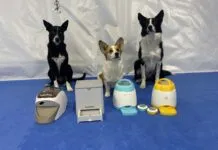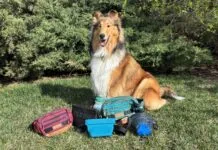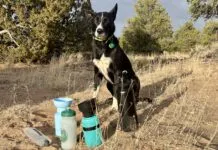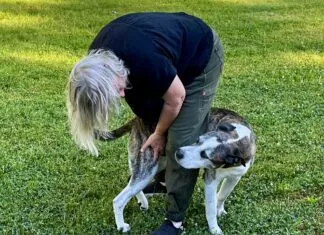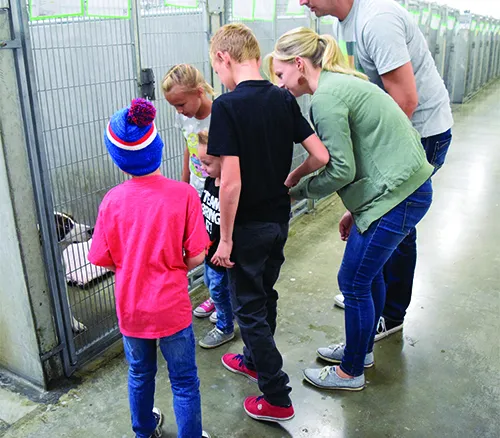
One might imagine that the world of animal sheltering would be filled with people who care about animals and want to save lives – all hearts and flowers, a community united with a common purpose of saving animals and ensuring their quality of life. Would that it were so.
In fact, it’s often the exact opposite, with warring camps of activists holding widely divergent opinions about how best to care for and rehome the dogs, cats, and other species who end up in animal shelters. The introduction and promotion of “no-kill shelters” in the early 1990s only heightened the level of acrimony among animal protection professionals and grassroots rescue groups alike, creating conflict and controversy that sometimes hinders efforts to save homeless animals.
In 2019, six women, several of whom were chief executive officers of animal shelters in Colorado, got together to discuss their animal welfare beliefs, including shelter practices. All of them believe that our society is at a critical point in shaping the future of animal welfare. They agreed that while most people mean well in their attempts to change public policy around how we care for homeless pets, sometimes good intentions lead to unintended suffering for the very pets that people are trying to protect. And they sought to define and describe a modern model for socially conscious animal welfare.
Out of that conversation came the Socially Conscious Sheltering model, which they then shared with shelter CEOs from across the United States for their feedback. They sought input from shelters in different kinds of communities, with varying intake policies and levels of community engagement. The insight was incorporated into the fundamental goals of Socially Conscious Sheltering (SCS), and a website (scsheltering.org) was created. The SCS website describes SCS as “a framework that allows each of us to understand our role in creating best outcomes for pets. This concept is based on respectful treatment of animals. It’s about placing every healthy and safe animal that ends up in a shelter or rescue. It’s about transparency and leadership. It’s about thoughtful public policy. It’s about safe communities.”
As a long-time shelter supporter and former shelter manager myself, I am excited about the SCS model and hopeful that its guidance will improve outcomes for animal wards of shelters everywhere.
HOW WE GOT HERE
I have been observing – and participating in – the ever-evolving world of animal sheltering for the past 45 years. There are many things related to animal welfare that have gotten better – for both homeless animals and people who work in rescue and sheltering – and some things that have gotten worse in that time. My tremendous excitement about the promise of the Socially Conscious Sheltering model has a lot to do with what I have witnessed in the recent history and evolution of the sheltering field.
In 1976, I began volunteering at the Marin Humane Society (MHS), a private non-profit shelter with a contract to perform animal control services for all of Marin County, California. A few months later, I accepted a position as a customer service representative – the first paid position of several that I accepted at MHS over the next 20 years.
For my last decade there, I was Director of Operations, responsible for keeping our statistics as well as directing our Field Services, Animal Care, and Customer Service departments, so I was acutely aware of the number of animals we took in at the shelter, their quality of life while in residence with us, and what ultimately happened to them (returned to owner, adopted, or euthanized).
At the beginning of my tenure at MHS, the shelter took in about 15,000 animals per year – strays, owner-surrender, neglect and abuse cases – none were ever turned away. Marin was (and is) a wealthy, well-educated community. We were well supported by our community and better situated than many shelters to provide excellent care for the animals who were brought through our doors. And even though this number was far better than many other shelters at that time (and is better than some shelters even today), we ultimately euthanized about 40% of them.
In the ’80s and ’90s, a number of societal and public policy changes helped progressively decrease the number of animals that found themselves in shelters and the number of animals who were euthanized there. Leash laws and licensing decreased the number of free-roaming pets. The animal welfare world amped up its spay/neuter education efforts nationwide, and many states passed laws requiring shelters to surgically neuter all animals before they were adopted. Microchips increased the number of stray pets that could be returned to their owners.
By the time I left Marin to launch my Peaceable Paws dog training venture in 1996, MHS’s intake numbers had dropped to fewer than 6,000, with a comparable decrease in our euthanasia numbers. Nationally, intake and euthanasia numbers had also decreased.
This is right around the time that the practices and policies of a high-profile animal shelter in the county next to Marin started a revolution in the animal sheltering field – a well-intentioned revolution, to be sure, but one with unfortunate antithetical consequences.
THE “NO KILL” MOVEMENT
In the late 1980s, Richard Avanzino, the director of the San Francisco SPCA, began steering that organization away from the standard model of providing animal control services as well as sheltering and adoption services. Avanzino had been working to innovate solutions for improving the live release rates of the shelter, including building a network of foster providers, instituting a pit bull training and adoption program, paying owners of pit bulls to neuter their dogs, paying people to neuter stray and feral cats, and more. But he wanted to do even more to get the SF SPCA out of the job of euthanizing any animals, ever. He put the city on notice that his organization wouldn’t renew its contracts for animal control by 1989, though it intended to continue to shelter and find homes for animals.
[post-sticky note-id=’442912′]The city of San Francisco had to build a new city agency – the Department of Animal Care and Control – to take over animal control. In 1994, the SF SPCA announced that the organization was going to stop killing any “adoptable animals.” The SF SPCA was dubbed with the immediately popular appellation “no-kill shelter” and San Francisco was declared a “no-kill city.” It was a public relations home run near and far. From the very beginning, the public loved the idea of no-kill shelters – without understanding the nuances built into the definition.
Most members of the public were not aware, however, that not all animals brought to a no-kill shelter would survive. No-kill was described by Avanzino and the rapidly increasing number of no-kill devotees as practices that preserved the lives of all “healthy and treatable” animals and euthanized only those whose problems were deemed “unhealthy and untreatable.”
An obvious problem lay in the ability of shelters to interpret “unhealthy and untreatable” quite variably. Avanzino promoted the use of the standards pet owners would use if the problems occurred in their own pets; most of us would consider kennel cough or a broken leg as “treatable,” for instance. But these terms were interpreted in very disparate ways by shelters of different means and levels of commitment to no-kill principles.
What people often fail to understand (and what many shelters fail to communicate to their supporters) is that there are two types of shelters. “Open admission shelters” take in every animal brought to them; some are required to do so by virtue of contracts they have signed with a local government. In contrast, “limited admission shelters” may turn away animals that they know they will be unable to make available for adoption or that they do not have room for.
Many (perhaps most) limited-admission shelters were able to claim that they were no-kill, since they only rarely took in an animal that proved to be untreatable or unsafe to adopt. Far fewer open-admission shelters were able to make legitimate no-kill claims – and in the competition for donation dollars from animal lovers who didn’t want to give money to so-called “kill shelters,” this really hurt.
Shelters that could not or would not define themselves as no-kill were soon faced with hostility and a withdrawal of public support, causing many to try to meet the definition and make no-kill claims. Some open admission shelters could do so only through illegitimate means, such as warehousing an ever-increasing and untenable number of animals, wanton placement of animals to any other organizations (reputable and capable or not) that would take them, and adopting out animals with unsafe or borderline behavior issues.
Soon, all around the country, open-admission shelters began to bear an increased burden of accepting and caring for animals that no-kill shelters wouldn’t take – a costly burden, since caring for unhealthy animals requires greater resources. Simultaneously, these shelters began to feel the financial pinch as donation dollars were being diverted to no-kill organizations from former supporters.
UNINTENDED CONSEQUENCES
While the intention of the no-kill ethos is admirable, there have been some unfortunate consequences of the policies.
It’s been noted that more animals (especially dogs), previously recognized as behaviorally unsuitable for adoption, are being placed in the homes of adopters who are not adequately informed, experienced, or equipped to handle them safely. I have a thick file of news stories about dogs with bite histories who were adopted into homes where they later caused injuries and even fatalities.
Dog training and behavior professionals are in widespread and ever-growing agreement that we are seeing an increasing number of clients who are bringing us dogs who should never have been adopted to them in the first place. These are caring dog owners who had no idea what they were getting themselves into, sometimes because the shelter simply didn’t make a careful match in their eagerness to place the dog in a home, and sometimes because the shelter deliberately withheld information that would have helped the adopter realize this wasn’t the dog for them.
Twenty years ago, when I would express my opposition to the no-kill movement at seminars while speaking in support of responsible sheltering, I was often met with puzzled stares and sometimes open argument. Today I see a crowd full of nodding heads and often receive resounding rounds of applause from other training and behavior professionals who are encountering significant and dangerous challenges from client dogs adopted from organizations that are more concerned with their live release rate than with good, safe adoptions.
Additionally, a phenomenon that has required the creation of a new label – “rescue hoarding” – has risen to epidemic levels in the past decade. It’s a problem that can’t be traced precisely to no-kill’s door, but the perpetrators tend to be acquainted.
Once upon a time, if you heard about an animal hoarder, the person was usually a little old lady who lived in an apartment with 30-plus cats. Today, the vast majority of animal hoarding stories in the news involve rescue hoarders – people or groups who may have started out as legitimate rescuers, but who ended up completely overwhelmed with too many animals to care for and not enough resources to do so.
These are sometimes 501(c)3 non-profit rescue groups and shelters, sometimes individuals pretending to be 501(c)3 groups or shelters, and sometimes just individuals who hold strongly to the conviction that any life is better than no life. The common denominator is that many, or even most, have gotten their animals from shelters that are handing off animals willy-nilly to almost anyone, in their efforts to call themselves no-kill. Dogs in these rescue hoarder situations are often badly malnourished, sick and dying, or already dead.
TIME FOR A NEW MODEL
The original architects of the SCS model were six women, all of whom were Presidents and CEOs of shelters or veterinary organizations in Colorado. They started a conversation about the need for a new guidance document for sheltering in January 2018, when they were all in attendance at a sheltering-related conference.
In March 2019, however, they all had a front-row seat to an event that provided the impetus to formalize their shared opinions and values regarding animal sheltering into what have become eight tenets of SCS.
It started with an inspection by the Department of Agriculture of an open-admission shelter in Pueblo, Colorado, which led to the resignation of the shelter director and ultimately, closure of the shelter. The first and subsequent inspections of the facility found numerous animals suffering with untreated injuries and illnesses, health records for the animals nonexistent or in disarray, inadequate sanitation, treatment cabinets stocked with seriously out-of-date and unlabeled medications, intact animals of the opposite sex housed together, dogs who were being quarantined in bite cases having opportunities to come into contact with front desk staff, and more.

All of the surviving animals at the shelter had to be transferred to other area shelters, including those run by the founders of SCS. When the Pueblo shelter closed, the organization that had been running the shelter, PAWS for Life, issued a statement that read in part, “There were significant hurdles in fulfilling the mission to be a no-kill, full-access public shelter to save lives that otherwise might have been lost under prior management.” (The irony of the suffering experienced by the animals who didn’t have timely access to veterinary care seemed to have been lost on the managers responsible.)
The founders of SCS released a group statement following the Pueblo shelter closure. It read, in part, “The suffering that happened at Community Animal Services of Pueblo, operated by PAWS for Life, is unacceptable. In an effort to adhere to a damaging local ordinance, it appears animals were allowed to suffer and die from their illnesses and injuries rather than being humanely euthanized. The animal welfare community’s priority is to ensure these animals are properly cared for and that they are protected from situations like this in the future….
“This is a regretful example of how the no-kill movement, when taken to the extreme, preys upon compassionate people’s desire to protect animals. Animals deserve respect, nurturing, support, and it is never acceptable to allow them to suffer. Our entire community is deeply saddened by this situation.”
On the SCS website, its founders admit that, in general, homeless animals in Colorado already enjoy “incredible” outcomes; the entire state enjoys an average 90% live release rate. But the founders wanted to address the fact that attempts to reach and maintain a zero kill status often lead to situations like the one in Pueblo, with under-funded shelters manned by over-burdened staff, leading to increased animal suffering.
The SCS founders released their tenets and published an explanatory website (SCSheltering.org) in March 2019. By following their suggested guidelines, the SCS founders say, shelters can achieve high live-release rates while also ensuring that no animal is allowed to suffer and the communities are kept safe from dangerous animals.
EIGHT TENETS OF SCS
Each of these tenets addresses common breakdowns where implementation of the no-kill model fails to adequately address the needs and welfare of all the animals in a given community or consider the safety of human caretakers, foster homes, and adopters. I applaud the remarkable steps this document takes toward repairing the significant flaws of no-kill. My comments follow each tenet and appear in italics.
1. Place every healthy and safe animal. Every single one. Healthy is defined as either having no signs of clinical disease or evidence of disease that a veterinarian determines has a good or excellent prognosis for a comfortable life. Safe means that the animal has not exhibited behavior that is likely to result in severe injury or death to another animal or person.
This tenet maintains the original stated goal of no-kill to place all healthy, adoptable animals, but adds critically important definitions of the terms “healthy” and “safe” and emphasizes the importance of “safe.”
2. Ensure every unwanted or homeless pet has a safe place to go for shelter and care. An animal’s opportunity to be nurtured, healed, and rehomed should not depend on their age or condition – every community must have a shelter that accepts all animals brought to it. It is unacceptable to turn animals away because they are too old, sick, or broken.

This addresses an element totally overlooked by the no-kill model – and is one of my favorites. Communities must provide a safe place for all the homeless animals in their jurisdiction. In an attempt to prevent overcrowding, some shelters have begun to maintain waiting lists, some months-long, for people who want or need to surrender their animals. This sometimes results in animals being dumped and left to starve or be hit by cars as they attempt to fend for themselves – and this is simply unacceptable.
3. Assess the medical and behavioral needs of homeless animals and ensure these needs are thoughtfully addressed. Animals housed in shelters and rescues must be assessed for disease and injury and must have all medical conditions addressed so the animal does not suffer. These animals must also have their behavioral needs assessed and met, including enrichment sufficient to make them comfortable and to prevent self-destructive, obsessive-compulsive coping behaviors.
Addressing medical and behavioral needs of shelter animals in a timely manner should go without saying, but sadly, it doesn’t – as evidenced by the Pueblo experience. I wish that example was a rare anomaly, but unfortunately it is all too common.
4. Align shelter policy with the needs of the community. Does the community allow trap-neuter-return programs? If so, offer them. Will members of your community adopt animals with chronic disease, and are they willing to assume the time and expense of managing that disease? If so, with full disclosure, place them in these homes. Socially Conscious Shelters listen to their communities.
Every community is different. It’s a challenge for shelters to be able to meet the desires of the community and make ethical and humane choices for, and meet the needs of, the animals in their care.
5. Alleviate suffering and make appropriate euthanasia decisions. Compassionate euthanasia is a gift. It is not acceptable to let a terminally ill, suffering animal languish in a cage until it dies naturally when compassionate euthanasia can ease that endless pain. It is not acceptable to house a known dangerous animal who cannot be safely placed in the community for years until it goes crazy in a cage. Each euthanasia decision is difficult, and every decision must consider the welfare of the individual animal.
This tenet articulates what seems so obvious to many animal lovers: It’s our duty to alleviate animal suffering when and where we can. Compassionate euthanasia decisions are far too often blocked by those who believe that any life is better than no life. Sometimes, those standing in the way of these decisions are shelter volunteers and even Board members.
6. Enhance the human-animal bond through safe placements and post-adoption support. Integrating a living being into a new home can be difficult. As adoption agencies, Socially Conscious Shelters have a responsibility to support the new family. This can mean post-adoption behavior advice, classes for new pet caregivers, addressing shelter-related medical needs and being willing to accept the animal back if the pet and the family are not a good fit.
This also means not placing animals into homes that disrupt the human-animal bond by injuring children, other pets, and other people. There are many behavior issues that can be addressed through behavior modification and positive experiences. There are other behaviors that are dangerous and that cannot be mitigated.
This is another important point – one that is often missed by shelters that are focused solely on their live release rate. Some of the resources directed toward bringing in animals from other jurisdictions (and other countries) might be better spent providing support for the animals already in the shelter’s own community.
7. Consider the health and wellness of each animal and each community when transferring animals. Moving dogs and cats from communities that do not have homes available for them to communities where people are actively seeking pets saves lives.
However, bringing pets into a community is a responsibility. It is a responsibility to the animals already living in that community to not bring in infectious diseases that would make them sick. It is a responsibility to those living within the community to bring in animals that will live in harmony. And there is a responsibility to the community from which animals are being moved to impact that community’s animal welfare struggles through humane education and spay and neuter programs.
There are documented cases of serious canine diseases being moved north from southern shelters and into the U.S. from other countries, as well as dogs from unsocialized or rural backgrounds suffering immense stress and never habituating to city life. Some transports are in violation of interstate laws that require veterinary checks and health certificates.
8. Foster a culture of transparency, ethical decision-making, mutual respect, continual learning, and collaboration. Socially Conscious Shelters are committed to full transparency. This can include reporting accurate statistics, sharing policies, and fully and quickly admitting when mistakes are made. Integrity must be the foundation of all decisions. Every shelter can learn something from every other shelter – it is important to be curious and to share innovative solutions to common problems. Only by working together can we ensure the best outcomes for all animals.
This is critical. How can we have a prayer of a chance of knowing how shelter programs are working and how the animals are faring if we aren’t transparent?
SCS GATHERS MOMENTUM
Thanks to the leaders who innovated SCS, the animal sheltering community now has a model to look to that supports the placement of every adoptable animal, while at the same time recognizing that not every animal is adoptable.

The Eight Tenets of Socially Conscious Sheltering was released in March 2019, and the model was swiftly embraced by many other shelters in Colorado, as well as the Colorado Veterinary Medical Association. By August, shelters all over the country had also adopted Socially Conscious Sheltering, including shelters in Los Angeles, Davis County (UT), Santa Cruz County (CA), St. Louis (MO), Ventura County (CA), Berks County (PA), Nebraska, Cleveland (OH), Michigan, Jessamine County (KY), Loudon County (VA), and dozens of other organizations.
Are the animal protection, sheltering, and rescue organizations in your area on board with Socially Conscious Sheltering? If you don’t know, contact them and find out. If they are not, you can help them learn about it and help them understand why they should be. Encourage your animal loving friends to do the same. Educate and pressure your local government officials and organizational board members to get on board. We all want a better life for the animals in our world. You can help make it happen.




